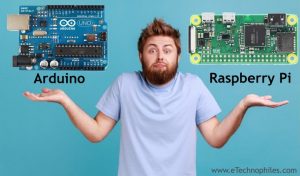Last updated on March 22nd, 2024 at 11:51 am
Arduino and Raspberry Pi are the most popular circuit boards opted for embedded and electronics projects. But to select one among these two can be confusing for beginners.
Both boards are good for everyday projects. Still, a close comparison is required due to the difference in price and specs. The project application is also a major deciding factor.
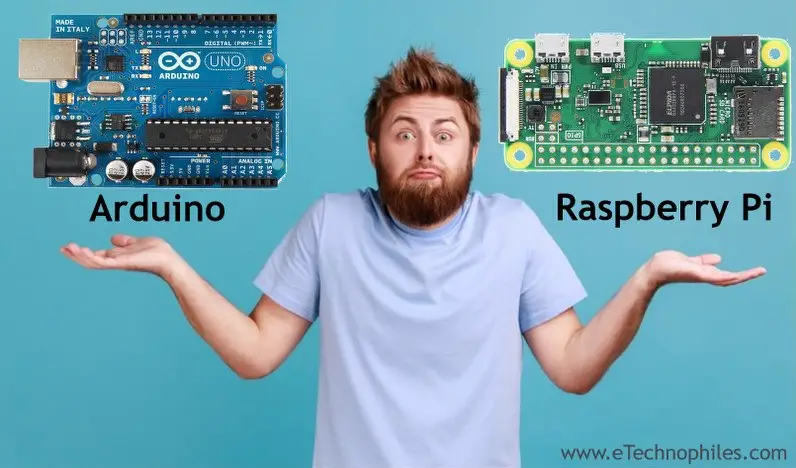
Numerous questions have been arising regarding this decision-making. This article will help you to rectify all the confusion in making the right choice. Let us first see the basic features of Arduino and Raspberry Pi. We will then discuss some relevant questions that compare the two boards.
Table of Contents
Note: This article compares only the Single-board computers from Raspberry Pi with Arduino. And not the Pi pico, which is the first Pi microcontroller board.
Arduino VS Raspberry Pi: major differences
The basic functionality of Arduino is to control the devices using a microcontroller, which is completely different from the Raspberry Pi, which is a tiny computer by itself that runs on a powerful microprocessor. Still, both boards can be used for simple electronic projects.
Apart from this similarity, they differ in numerous specifications listed in the table below.
Since both of them have a wide range of products, we are comparing their most basic and popular board here: Arduino UNO and Raspberry Pi Zero 2 W.
| Comparison | Arduino UNO | Raspberry Pi Zero 2 W |
|---|---|---|
| Definition | A microcontroller based development board | A single-board computer |
| Application | Embedded projects | IoT projects, Standalone PC |
| Processor | ATmega328p Microcontroller | Broadcom BCM2710A1, quad-core 64-bit SoC |
| Cost | $23. Clone- $5 | $15 |
| Ease of use | Simple | Difficult for beginners |
| Availability | Cheap clones are everywhere | Limited |
| Power consumption | Low. Suitable for standalone projects(on battery) | High. The adaptor is required. |
| Accessories | Not Mandatory(except USB cable) | SD card, Monitor, Keyboard, etc. |
| Clock Speed | 16MHz | 1GHz |
| Architecture | 8-bit | 64-bit |
| RAM | 2kb | 512MB |
| GPIO | 20 | 40 |
| Max. I/O Current | 40 mA | 5-10 mA |
| Power | 175mW | 700mW |
| Programming Language | C++ (Usually) | Python (Usually) |
| Operating System(default) | Raspbian or RPI OS based on Linux | |
| WiFi Connectivity | No built-in WiFi | built-in WiFi and Bluetooth |
It is very clear from the comparison that Raspberry PI leads in many areas like high clock speed, larger memory, and additional features. On the other hand, Arduino is simpler and easy to use than Raspberry Pi.
Hence both devices are best in their role of action. It is the application to be focused on the time of selecting one among them.
Should you start with Arduino or Raspberry Pi?
Raspberry Pi is way ahead of Arduino in many areas like high clock speed, larger memory, powerful processor, and additional features. Even the most powerful Arduino board: Arduino Portenta H7 has fewer features than a basic RPI board.
Does this mean RPI is the winner? No.
Arduino is simpler, easy to use, and does not require any additional accessories to create projects. It works out of the box and cheap clones are easily available. Hence both devices are best in certain areas. It is the application part that sets the basis for selection.
The table below can help you identify the suitable board among these two.
| Where to use Arduino | Where to use RPI |
|---|---|
| Robotics and Sensors projects | Adding webcams, USB storage to the sensory projects. |
| Temperature monitoring using a display | Temperature monitoring and sending emails of the data. |
| Mere computation | Adding webcams, and USB storage to the sensory projects. |
| Projects running on battery | Power consumption is not an issue. |
| For beginner-level projects | For more advanced projects |
| Bluetooth-controlled toy car | Bluetooth-controlled toy car with a webcam |
| Plenty of boards to choose from | Limited boards |
| Easily available | Limited availability(shortage) |
What is an Arduino board?
Is Arduino a microcontroller or a microprocessor? This is one of those questions that confuses a lot of beginners. It is very important to note that Arduino is neither a processor nor a microcontroller. They are circuit boards that have microcontroller chips on them. It is basically a development board that makes microcontrollers easy to use.
It is usually used in projects where direct control of devices like motors, sensors, is needed. The Arduino has its own IDE or programming platform which is very easy to use and beginner-friendly. Thus, Arduino is a perfect platform for building robots!
It is designed by an Italian-based company and the good news is, all the hardware designs of this device are available as open source. There are several versions of Arduino boards available to choose from like Arduino UNO, Pro mini, Mega and Nano, etc. All these variants differ in a few specifications.
Given below is the image of the most popular Arduino board: Arduino UNO.
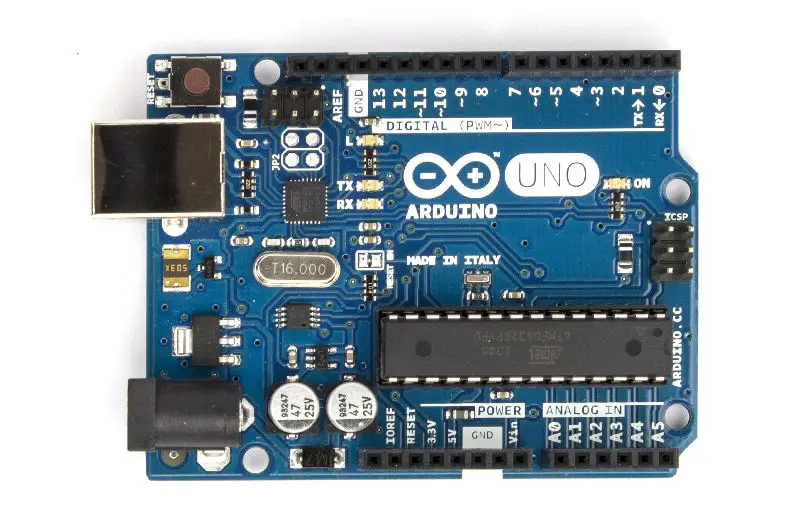
Arduino has relatively simple designs and simpler software structures. It has no interpreter, no operating system, and no firmware. The software in this device works for Windows, MAC, and Linux.
We will just have to connect a USB and click a button to upload the code to the system. The programming language commonly fits all its versions the same way. It is one of the easiest programming languages to learn.
Hardware specifications of UNO
Now let’s find out the important hardware components on the UNO board.
- Microcontroller: The microcontroller chip is the heart of Arduino. Arduino UNO has an ATMEGA AVR microcontroller chip manufactured by Atmel.
- Crystal resonator: It is connected to the microcontroller to control the running speed of microcontroller.
- Small microcontroller: It uploads the software created in the main microcontroller. It also supports connecting the USB cable to the Arduino board and communication through USB. It also has a crucial role in debugging.
- Power pins: Slots for 3.3V and 5V is available.
- Voltage Regulator: It regulates the supply voltage to 5V.
- Reset button: Used to reboot the program.
- Tx & Rx: Pins for transmission and reception of serial data such as from GPS module, Bluetooth module, wifi module, and more
- Analog Input Pins: The 6 analog pins are used to measure the analog data that varies from 0V to 5V
- PWM Pins: Used to generate the pulse width modulated square waves as output.
Arduino IDE software
Apart from these hardware components, the software side of Arduino is also simple to handle. Since it has no operating system, it has to be connected to a PC and programmed using the dedicated software called Arduino IDE. Arduino software is available to download from Arduino.cc.
Once the installation is complete, connect the board to the computer using a USB cable.
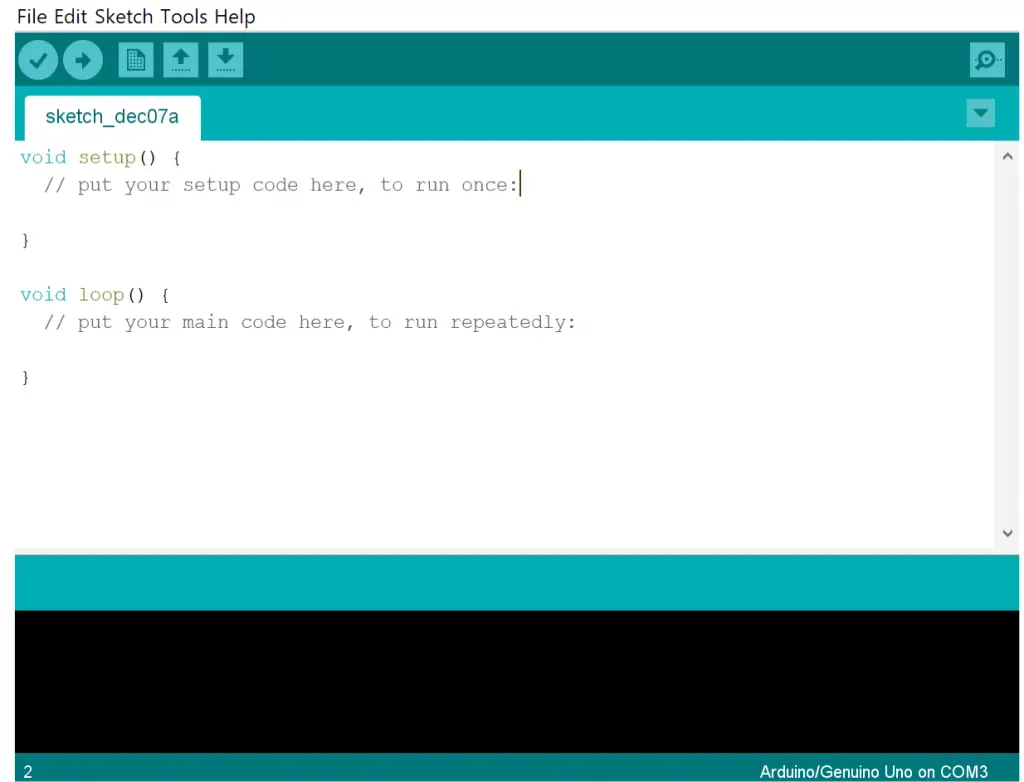
To program the board, open the IDE on the PC and select the right Arduino board from the boards’ section. It is also important to check whether the environment can connect and communicate with Arduino. From the menu, select ‘ports’ from ‘tools’. Open ‘COM/serial port’.
If the Arduino COM port is listed there, the board is ready to use with the PC. Select the listed COM port.
If it does not display the COM port, there may be some issues with drivers. Also, try to plug the board into another USB port and check again.
Another attractive feature of the IDE is that there are lots of demo programs, called sketches, available to upload. These are simple programs and are perfect for beginners.
To access them open the ‘File’ menu, click on ‘Basics’ from ‘Examples’. There you will find the list of demo programs. The code snippets are available with the instructions to follow for connecting the device with the board before executing the program.
These were the fundamental details about Arduino. Now let’s look at the Raspberry Pi boards before comparing them with Arduino.
What is Raspberry Pi?
Raspberry Pi is another well-known circuit board but as efficient as a computer. Apart from just being a control unit, Raspberry Pi is known as a Single Board Computer (SBC). It is called so because it is occupied with all the basic functionalities to work as a miniature PC. It thus comprises a microprocessor rather than a microcontroller.
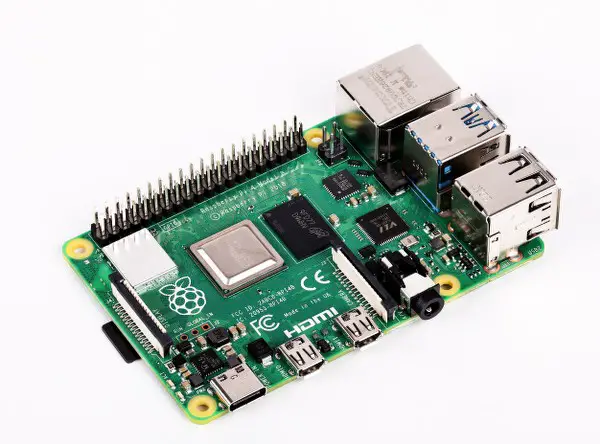
The Pi has its operating system and can be connected to a monitor, keyboard, mouse, or even to the internet. It works on the Linux operating system, specifically on ‘Raspbian’ which is a version of Linux. However, with the release of the latest 64-bit OS, it is now called ‘Raspberry Pi OS’ and not Raspbian.
With the help of an RPI board and its operating system based on Linux, you can build your own personal computer and perform computer functions like surfing the internet, playing games, documenting, programming, etc.
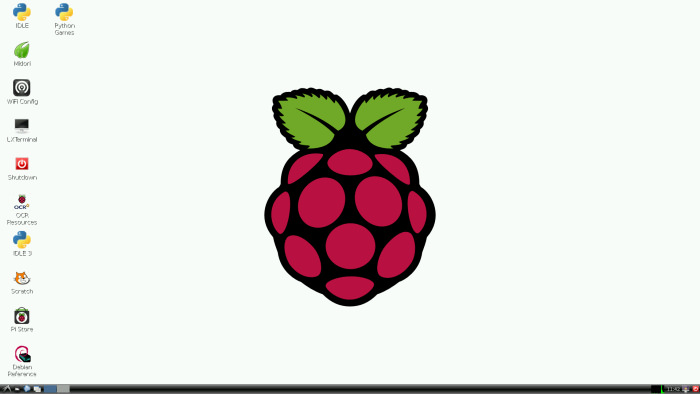
Compared to Arduino, the Raspberry pi has fewer variants available which are discussed below.
List of Raspberry Pi boards
- R-pi Zero
- R-pi Zero W
- R-pi Zero 2 W
- R-pi 1 Model A+
- R-pi 1 Model B+
- R-pi 3 Model A+
- R-pi 3 Model B
- R-pi 3 Model B+
- R-pi 4 Model B
- Raspberry Pi 400
- Raspberry Pi Pico(First microcontroller board by Pi foundation).
Arduino vs Raspberry Pi – How to choose?
Before selecting either of the boards, you should focus on the application. The following points can help you in deciding which one to go for:
- For mere computation, choose Arduino. To achieve a complete PC-level application, choose Raspberry Pi.
- To work on robotics and sensor projects, choose Arduino-board. To add elements like webcams and USB storage to the sensory projects, go for Raspberry Pi.
- To build a Bluetooth-controlled toy car, select the UNO board. To build a Bluetooth-controlled toy car with a webcam, use Raspberry Pi.
- If you want to build simple projects where low power consumption is important, then go for Arduino boards.
- Finally, if you are a beginner, go for Arduino; otherwise, you can work with Raspberry Pi.
Let’s discuss some frequent queries on Arduino and Raspberry Pi.
Which is easier, Arduino or Raspberry Pi?
If you are an expert, the Arduino and Raspberry Pi are equally easy to handle. But the fact is that Arduino is very simple and easy to use than Raspberry Pi. It is obvious because Arduino is just a controller module, whereas Raspberry Pi offers the functionality of a complete PC.
In terms of interfacing and coding, the complete procedure can be performed on Raspberry Pi since it comes with an operating system. But the Arduino has to be connected to a PC which requires the installation of additional Arduino software and the related drivers. Once the code is uploaded to Arduino, it only needs external power to operate, i.e., no PC.
Can a Raspberry Pi do everything that an Arduino can?
The answer is a big YES. Because
- While Arduino is created as an interfacing platform for the microcontroller, .i.e, Arduino Integrated Development Environment (IDE), A raspberry PI can function as a tiny computer, i.e., Single Board Computer (SBC).
- The GPIO pins on Raspberry Pi deliver all the functionalities of an Arduino, like SPI, I2C, UART etc.
Price comparison
The cost of Arduino and Raspberry Pi are relatively the same. Their pricing is closely related to two criteria:
- The model: Both Arduino and Raspberry Pi are available in various models. The cost also varies according to the model specifications. The basic model of Raspberry Pi, which is Pi Zero, costs $5, whereas the Model B Series costs $35. The same is applicable in the case of Arduino too. Cheap clones of some Arduino boards cost $3. At the same time, powerful boards like Arduino Portenta H7 costs around $80.
- The application: The type of project to which the board is used is also an important concern. The simple project requires a basic model but as the requirement level increases, we should opt for higher models. Some projects may also require more interfaces beyond the board which also increases the overall cost.
